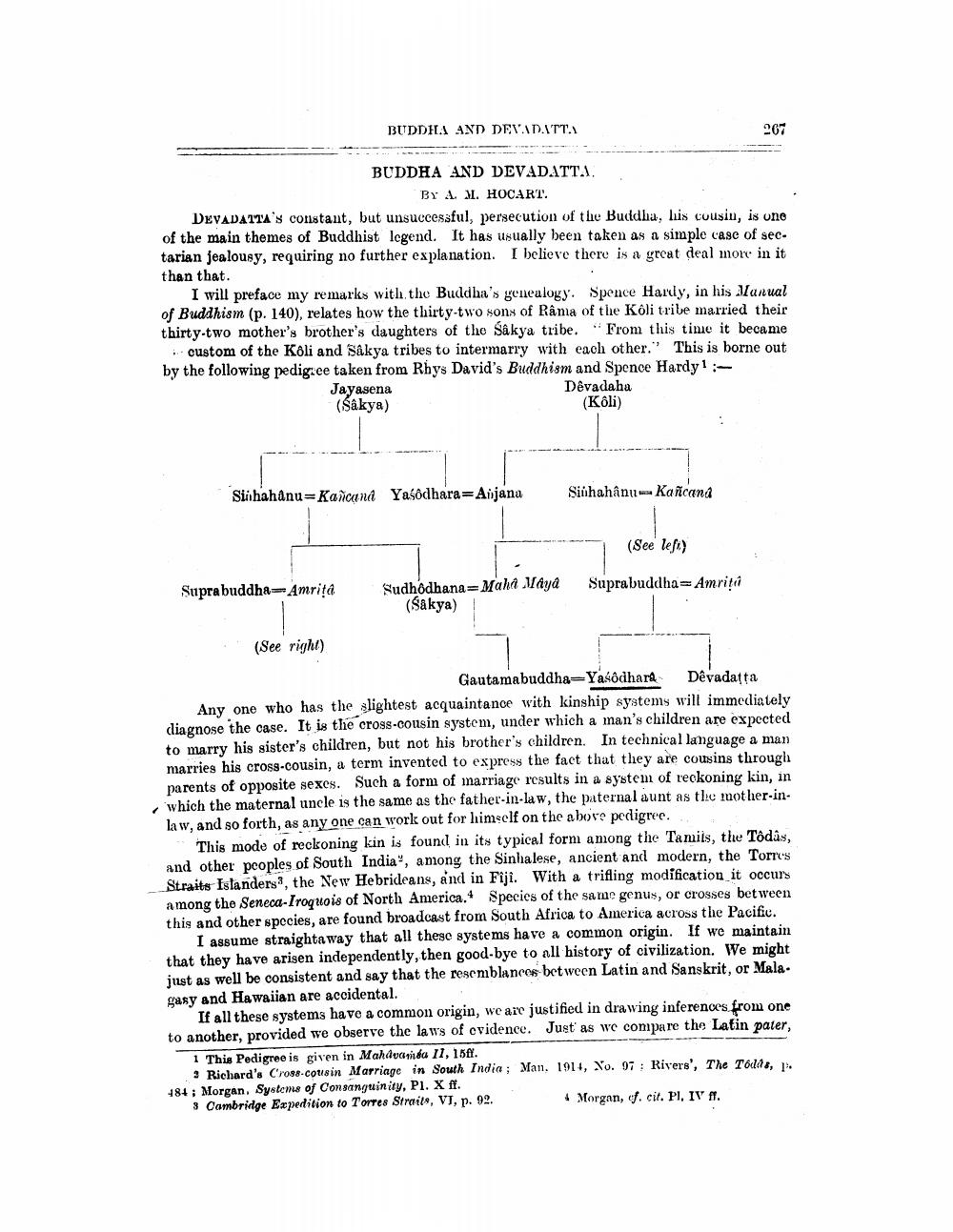________________
BUDDHA AND DEVAD.ATT.
267
BUDDHA AND DEVADATT..
BY A. M. HOCART. DEVADATTA'y constant, but unsuccessful, persecution of the Buddha, his cousin, is one of the main themes of Buddhist legend. It has usually been taken as a simple case of sec. tarian jealousy, requiring no further explanation. I believe there is a great deal more in it than that.
I will preface my remarks with the Buddha's genealogy. Spence Hardy, in his Manual of Buddhism (p. 140), relates how the thirty-two sons of Râma of the Kôli tribe married their thirty-two mother's brother's daughters of the Sakya tribe. From this time it became
custom of the Köli and Sakya tribes to intermarry with each other." This is borne out by the following pedigree taken from Rhys David's Buddhism and Spence Hardy! :Jayasena
Dêvadaha (Sakya)
(Kôli)
Siihahậnu=Kaîcana
Yaśôdhara=Aijana
Siúhahân. Kancana
(See left)
Suprabuddha-Amrita
Sudhôdhana=Maha Vaya
(Sakya)
Suprabuddha= Amrita
(See right)
Gautamabuddha-Yasodhara Dêvadatta Any one who has the slightest acquaintance with kinship systems will immediately diagnose the case. It is the cross-cousin system, under which a man's children are expected to marry his sister's children, but not his brother's children. In technical language a man marries his cross-cousin, a term invented to express the fact that they are cousins through parents of opposite sexes. Such a form of marriage results in a system of reckoning kin, in which the maternal uncle is the same as the father-in-law, the paternal aunt as the mother-inlaw, and so forth, as any one can work out for himself on the above pedigree.
* This mode of reckoning kin is found in its typical form among the Tamils, the Todas, and other peoples of South India, among the Sinhalese, ancient and modern, the Torre's Straits Islanders, the New Hebrideans, and in Fiji. With a trifling modification it occurs among the Seneca-Iroquois of North America. Species of the same genus, or crosses between this and other species, are found broadcast from South Africa to America across the Pacific.
I assume straightaway that all these systems have a common origin. If we maintain that they have arisen independently, then good-bye to all history of civilization. We might just as well be consistent and say that the resemblances between Latin and Sanskrit, or Mala. gasy and Hawaiian are accidental.
If all these systems have a common origin, we are justified in drawing inferences from one to another, provided we observe the laws of evidence. Just as we compare the Latin pater,
1 This Pedigree is given in Mahayanda 11, 15ff.
? Richard's Cross-cousin Marriage in South India ; Man, 1914, No. 97 : Rivers', The T6dda, 184 ; Morgan, Systems of Consanguinity, Pi. X ft. 3 Cambridge Expedition to Torres Straits, VI, p. 92.
Morgan, ef. cit. PI, IV ff.




